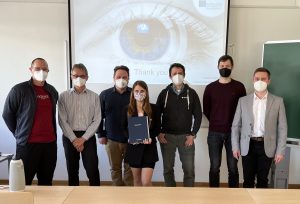Our paper has been accepted at MICCAI 2022.
Title: DeepPyram: Enabling Pyramid View and Deformable Pyramid Reception for Semantic Segmentation in Cataract Surgery Videos
Authors: Negin Ghamsarian*, Mario Taschwer, Raphael Sznitman*, Klaus Schoeffmann
* University of Bern, Switzerland
Abstract: Semantic segmentation in cataract surgery has a wide range of applications contributing to surgical outcome enhancement and clinical risk reduction. However, the varying issues in segmenting the different relevant structures in these surgeries make the designation of a unique network quite challenging. This paper proposes a semantic segmentation network termed, DeepPyram, that can deal with these challenges using three novelties: (1) a Pyramid View Fusion module which provides a varying-angle global view of the surrounding region centering at each pixel position in the input convolutional feature map; (2) a Deformable Pyramid Reception module which enables a wide deformable receptive field that can adapt to geometric transformations in the object of interest; and (3) a dedicated Pyramid Loss that adaptively supervises multi-scale semantic feature maps. Compbined we show that these can effectively boost semantic segmentation performance, especially in the case of transparency, deformability, scalability, and blunt edges in objects. We demonstrate that our approach performs at a state-of-the-art level and outperforms a number of existing methods without imposing additional trainable parameters.

